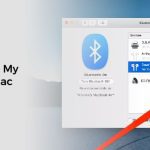Creating a group in gmail is one of the easiest ways to send messages to a large number of people at the same time. You can schedule an email to automatically go out at a certain time, or you can send a new message to all of the contacts in your group list. You can also add contacts to the CC or BCC fields from your phone. Then you can monitor what happens after you send a message.
Send a new message to all contacts in the group list
Using Gmail’s Contacts app, you can send a new message to all contacts in the group list. This is useful if you have created a Gmail group and want to send an announcement to the group.
You can also add contacts to your group. You can add contacts manually or add contacts to your group automatically. The process is easy. You can add contacts manually by clicking the pencil icon. Alternatively, you can add contacts automatically by selecting the contacts you want to add and clicking the “Insert into group” button.
When you add contacts to your group, Gmail will suggest names of other contacts. You can choose a name that is easy for you to remember. However, it is best to choose a name that will describe the group of people.
You can also add contacts to your contact list manually by clicking the “Contacts” button. This can be done in the main Gmail page, or by opening the Contacts app in a browser.
When you are ready to send a new message to all contacts in your group list, you can choose the group name. You can also add labels. The label name will be displayed as a suggestion. You can add it to the “To” line of your message. If you have chosen a Bcc address, you can type in the label name and all contacts in the group list will receive the message. If you choose a Cc address, all contacts in the group will not receive the message.
You can delete contacts from your group list if you want. You can do so by clicking the small X in the right side of the name. You can also delete the group completely if you don’t want to have a group anymore.
The Gmail contact group can be set to send messages at certain times. This can be useful when you need to send messages to a group at certain times of the day. You can also configure automated follow up emails.
Add contacts to CC or BCC fields from a phone
CC and BCC fields are often found in most email clients. They are useful for sharing and maintaining the privacy of email addresses. However, there are some things you should know about these fields before using them. CC and BCC fields are two of the oldest email technologies, so you should be aware of the correct usage.
CC is usually used for sending emails to other team members or staff in other departments. It is used to introduce contacts and keep them in the loop. It also functions like the “To” field. The included email addresses are forwarded along with the message. But it can be tricky. Some email applications do not allow enough information to be exposed in the email body. If this is the case, you might not want to use CC. You can use BCC instead.
BCC is also useful for sending mass emails, such as marketing and sales emails. But it’s not appropriate for sending emails to your own colleagues. This might result in blacklisting or spam.
However, CC and BCC are not the only email fields you should use. In addition to these two fields, there is also the Insightly linking field. This is a feature that helps emails get opened and avoid the spam folder. This feature is dependent on the email provider.
Unlike the CC and BCC fields, Insightly linking does not require users to type their email addresses in. In addition, it will send emails to only the recipients you want, so it can be more efficient. You can also use this feature to make the emails look professional.
However, the BCC field can also be used to send multiple copies of an email to contacts. However, you should only use this feature if you need to keep the email addresses secret. This is especially important if you’re sending emails to people who don’t want to receive any more emails from you. You also want to ensure that the recipients will understand that they have been added to your BCC list.
Schedule an email to automatically go out at the right time
Getting an email to automatically go out at the right time is a great way to boost your email clickthrough rate. The Gmail schedule feature is not only good for personal messages, but it can also be used for work-related messages. Gmail’s Schedule email page displays the times in your local time zone.
The Gmail schedule function is one of the best features on the website. It can be found in both the desktop browser and mobile apps. You can schedule emails to send at any time you choose. You can also reschedule or cancel an email through the Gmail app. You can also view the email’s history and copy the text of the email to your inbox. You can also use third-party tools to automate this process.
The Gmail Schedule email page is easy to navigate. The first thing you need to do is select the correct email account. You can use a single account or multiple accounts. You can also set the time and date for the email to send. After you have selected your email account, you will see a list of preset times. You will also see a dropdown arrow next to the Send button. You can choose to send the email now, later, or later still.
The Pick date and time window is a good place to start. This window shows a calendar of preselected times. You can also select a later date and time for the email to send. The Gmail schedule feature also enables you to send emails on a daily or weekly basis. You can even schedule your email to send at night, when your email account is not open.
The Gmail schedule feature also enables you send email from a different account. This is useful for people who work in different time zones. If you are in an alternate time zone, you will need to do an online conversion to find the right time.
You can also see the Gmail schedule feature on mobile apps. On iOS devices, you can schedule email to the right time by tapping the three dots in the top right corner of the screen.
Monitor what happens after you send a message
Managing an email group can be a tricky task. There are many things to consider when sending an email to a group. For instance, it is important to double check your email drafts to make sure that everything is correct. Additionally, you may need to send email reminders to group members. Using Gmail’s behavior-based email campaigns can ensure that emails are tailored to the specific responses of group members. It is also possible to schedule emails for automatic follow-up. In addition, Gmail offers detailed email analytics reports that can help you track the response time of your group emails.
Gmail also offers Confidential Mode, which allows you to set an expiration date for emails. This can be turned on by clicking the Confidential Mode clock icon. In addition, you can use the Send+Archive button to archive the entire thread of emails. In addition, you can lock messages to forwarding and download attachments. You can also use BCC to send copies of your emails.
Gmail offers Smart Compose, which automatically suggests words and phrases when you are typing an email. You can also turn writing suggestions off. To do this, go to Settings > General and click on the More Options menu. If you need to add email addresses manually, you can export your contacts from Gmail and enter them into the group email address field. Then, you can use the Send+Archive or BCC buttons to send the emails to the group members.
In addition to the automatic follow-up emails, you can also customize the emails that are sent to the group members. For example, you can set an email to go out after a certain date to remind the group members to complete their tasks. You can also schedule emails to go out at certain times, thereby reaching the group members at their most convenient time. If you are a Gmail super administrator, you can add search conditions to your Gmail account to ensure that you are sending emails to the right group members. You can also use the Google Workspace investigation tool to access data on your email content.


